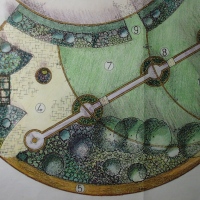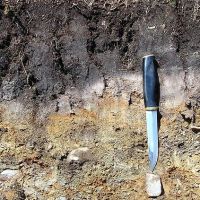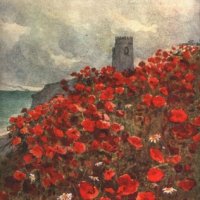Narcissus is a genus of bulbous perennials in the Amaryllis family. They are in the main hardy and most flower in the spring. There are various common names used to describe all or some of the genus – daffodil, narcissus, and jonquil. Narcissus are native to meadows and woods in Europe, North Africa and West Asia, centred in the Western Mediterranean.
There is disagreement about the number of distinct species (these range from 26 to more than 60 depending on who you ask) – as some are very similar and others have hybridised. All Narcissus cultivars are split into 13 divisions (using a combination of flower form and genetic background). New cultivars are registered by name and color with the Royal Horticultural Society, which is the international registration authority for the genus.
More than 27,000 names were registered as of 2008!
The name “daffodil” is derived from an earlier word “affodell”, a variant of Asphodel (another group of Mediterranean plants). The reason for the addition of the initial “d” is not known, although it could be a ‘slip of the dutch tongue’ – the merging of the main word with the Dutch article “de”, as in “De affodil”. Playful synonyms “Daffadown Dilly”, “daffadown dilly”, and “daffydowndilly” appeared as early as the 16th century. Everyday use of the term Daffodil tends to refer to the wild daffodil (N. pseudonarcissus).
The name Narcissus comes from the same latin word, which in turn is based on an ancient greek word – but its meaning is unknown. It could be a word loaned from another language. The most common explanation is based on the Greek myth of Narcissus, a Thespian hunter renowned for his beauty. He became so obsessed with his own reflection in a pool of water that as he knelt and gazed into it, he fell into the water and drowned. Some variations of the myth say that he died of starvation and thirst. In both versions the Narcissus plant sprang from his remains. However, this is by no means a certain derivation and it could be the that the hunter’s name was derived from the flower rather than the other way round!
Another explanation for the name comes from Pliny who stated that the plant was named because of its narcotic properties (the greek word means ‘to grow numb’). There’s no evidence to support this idea and it seems to have fallen out of favour. However, all Narcissus species do contain the poison lycorine (mostly in the bulb but also in the leaves). The bulbs can often be confused with onions, thereby leading to incidents of accidental poisoning.
On 1 May 2009 a number of schoolchildren fell ill at Gorseland Primary School in Martlesham Heath, Suffolk, England, after a daffodil bulb was added to soup during a cookery class.
Another problem is what florists call, “daffodil itch” – a skin problem often found on the hands after contact with the plant’s sap. Some cultivars seem more likely to cause this kind of dermatitis; eg ‘Actaea’, ‘Camparelle’, ‘Gloriosa’, ‘Grande Monarque’, ‘Ornatus’, ‘Princeps’ and ‘Scilly White’.
The Narcissus is used quite widely as a symbol:
- of unrequited love (after the Narcissus myth)
- of vanity (the West)
- of wealth and good fortune (the East).
- of the new year (Kurdish and Chinese cultures).
- of beautiful eyes (Persian culture)
- of the nation (Wales – where the daffodil is known as ‘Peter’s Leek’)
- of Easter (the German for daffodil is Osterglocke or ‘Easter Bell’)

Cornwall Daffodils- traditionally the place (along with the Scilly Isles and Channel Islands) where early supplies of cut flowers are sent out to the rest of Britain.
Some of the species names are:
N. bulbocodium = probably greek for ‘bulb’ (bolbos) and ‘a little fleece’ (kodion) – referring to the covering of the bulb – the ‘Hoop Petticoat Daffodil’
N. cyclamineus = like a Cyclamen flower
N. incomparabilis = incomparable
N. jonquilla = probably from ‘juncus’ (a rush) – the leaves being rush-like. The ‘Jonquil’
N. juncifolia = like Jonquil, rush – leaved!
N. major = larger
N. maximus = largest
N. minor = smaller
N. odorus = sweet-scented
N. poeticus = poet’s – the ‘Poets’ Narcissus’
N. pseudonarcissus = the false Narcissus. The ‘English Daffodil’
N. tazetta = an old name for the ‘Polyanthus Narcissus’
N. triandrus = having three stamens
Both species and hybrids are used extensively in gardens and grounds, looking good planted in borders or in naturalized drifts at the base of deciduous trees. Propagation is mainly from bulbs which are very easy to grow. They require little maintenance, but with some minimum care they can be more vigorous and floriferous, and they’ll multiply much more quickly, improving the show they provide each year. (see ‘Ten tips for looking after Daffodils’ above). Narcissus grows almost anywhere, although it does prefer well-drained soils with a sunny or light shade environment. The Narcissus species types are more specific in their requirements.
Source and further information:
Kew Gardens- Narcissus pseudonarcissus
Old School Gardener
If you’ve enjoyed reading this post and others on this blog, why not comment and join others by signing up for automatic updates via email (see side bar, above right ) or through an RSS feed (see top of page)?












How exciting to have spring just about to come in UK – or are they starting already. Thanks again for the post – another one for the gardeners almanac. It’s a good reminder for us southern hemisphere types to think about planting bulbs – it’s very hot still here though – so we might wait a bit
Hi Chas- glad you enjoyed the post. It seemed liek Spring had arrived the other day with temps up to 15 degrees C. Today we’re under cloud cover, the wind is getting up and there’s talk of freezing temps and snow next week- well that’s March for you here in the UK! Still, I’ve had an enjoyable morning at the local primary school, working with the children to explore what Spring is all about and digging over beds etc. i envy your warmth1
How nice to be out with the kids in the garden. We’re having about 8 days straight with temps over 30C in March! It’s a bit scary actually. Poor gardens are hanging out for water. Still it’s nice being out on a Friday evening for a drink and wander about.
Sounds lovely! My eldest daughter and her boyfriend (a young man from Queensland) are arriving for the weekend tonight (it’s Mothers’ Day here on Sunday), but we seem to be gripped in a misty,cold atmosphere for the next few days so doubt we’ll be venturing onto the terrace for evening drinks!
Enjoy the weekend Nigel. A Queenslander might find the mist and cold a bit harder to take than we Victorians – we quite like our seasons – although they seem to be getting a bit blurry now.